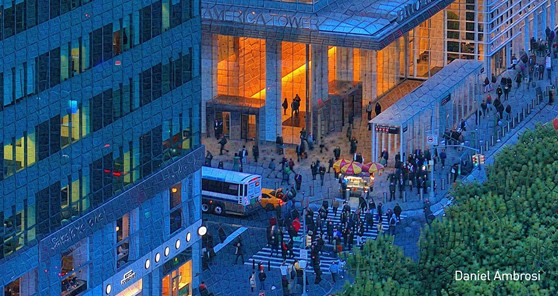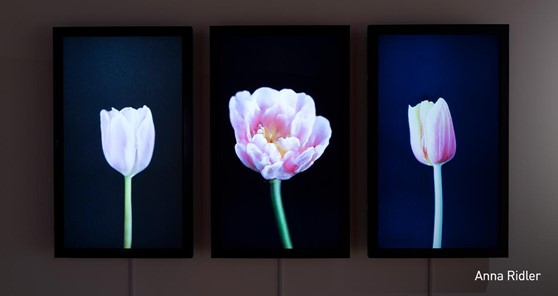Humans are wielding AI to create art, and a virtual exhibit that’s part of NVIDIA’s GPU Technology Conference showcases the stunning results.
The AI Art Gallery at NVIDIA GTC features pieces by a broad collection of artists, developers and researchers from around the world who are using AI to push the limits of artistic expression.
When AI is introduced into the artistic process, the artist feeds the machine data and code, explains Heather Schoell, senior art director at NVIDIA, who curated the online exhibit.
Once the output reveals itself, it’s up to the artist to determine if it stands up to their artistic style and desired message, or if the input needs to be adjusted, according to Schoell.
“The output reflects both the artist’s hand and the medium, in this case data, used for creation,” Schoell says.
The exhibit complements what has become the world’s premier AI conference.
GTC, running Oct. 5-9, will bring together researchers from industry and academia, startups and Fortune 500 companies.
So it’s only natural that artists would be among those putting modern AI to work.
“Through this collection we aim to share how the artist can partner with AI as both an artistic medium and creative collaborator,” Schoell explains.
The artists featured in the AI Art Gallery include:
- Daniel Ambrosi – Dreamscapes fuses computational photography and AI to create a deeply textural environment.
- Refik Anadol – Machine Hallucinations, by the Turkish-born, Los Angeles-based conceptual artist known for his immersive architectural digital installations, such as a project at New York’s Chelsea Market that used projectors to splash AI-generated images of New York cityscapes to create what Anadol called a “machine hallucination.”
- Sofia Crespo and Dark Fractures – Work from the Argentina-born artist and Berlin-based studio led by Feileacan McCormick uses GANs and NLP models to generate 3D insects in a virtual, digital space.
- Scott Eaton – An artist, educator and creative technologist residing in London, who combines a deep understanding of human anatomy, traditional art techniques and modern digital tools in his uncanny, figurative artworks.
- Oxia Palus – The NVIDIA Inception startup will uncover a new masterpiece by Leonardo da Vinci that resurrects a hidden sketch and reconstructs the painting style from one of the most famous artists of all time.
- Anna Ridler – Three displays showing images of tulips that change based on Bitcoin’s price, created by the U.K. artist and researcher known for her work exploring the intersection of machine learning, nature and history.
- Helena Sarin – Using her own drawings, sketches and photographs as datasets, Sarin trains her models to generate new visuals that serve as the basis of her compositions — in this case with type of neural network known as a generative adversarial network, or GAN. The Moscow-born artist has embedded 12 of these creations in a book of puns on the acronym GAN.
- Pindar Van Arman – Driven by a collection of algorithms programmed to work with — and against — one another, the U.S.-based artist and roboticist’s creation uses a paintbrush, paint and canvas to create portraits that fuse the look and feel of a photo and a handmade sketch.
For a closer look, registered GTC attendees can go on a live, personal tour of two of our featured artists’ studios.
On Thursday, Oct. 8, you can virtually tour Van Arman’s Fort Worth, Texas, studio between 11 a.m.-12 p.m. Pacific time. And at 2 p.m. Pacific, you can tour Refik Anadol’s Los Angeles studio.
In addition, a pair of panel discussions, Thursday, Oct. 8, with AI Gallery artists will explore what led them to connect AI and fine art.
And starting Oct. 5, you can tune in to an on-demand GTC session featuring Oxia Palus co-founder George Cann, a Ph.D. candidate in space and climate physics at University College London.
Join us at the AI Art Gallery.
The post AI in the Hand of the Artist appeared first on The Official NVIDIA Blog.



